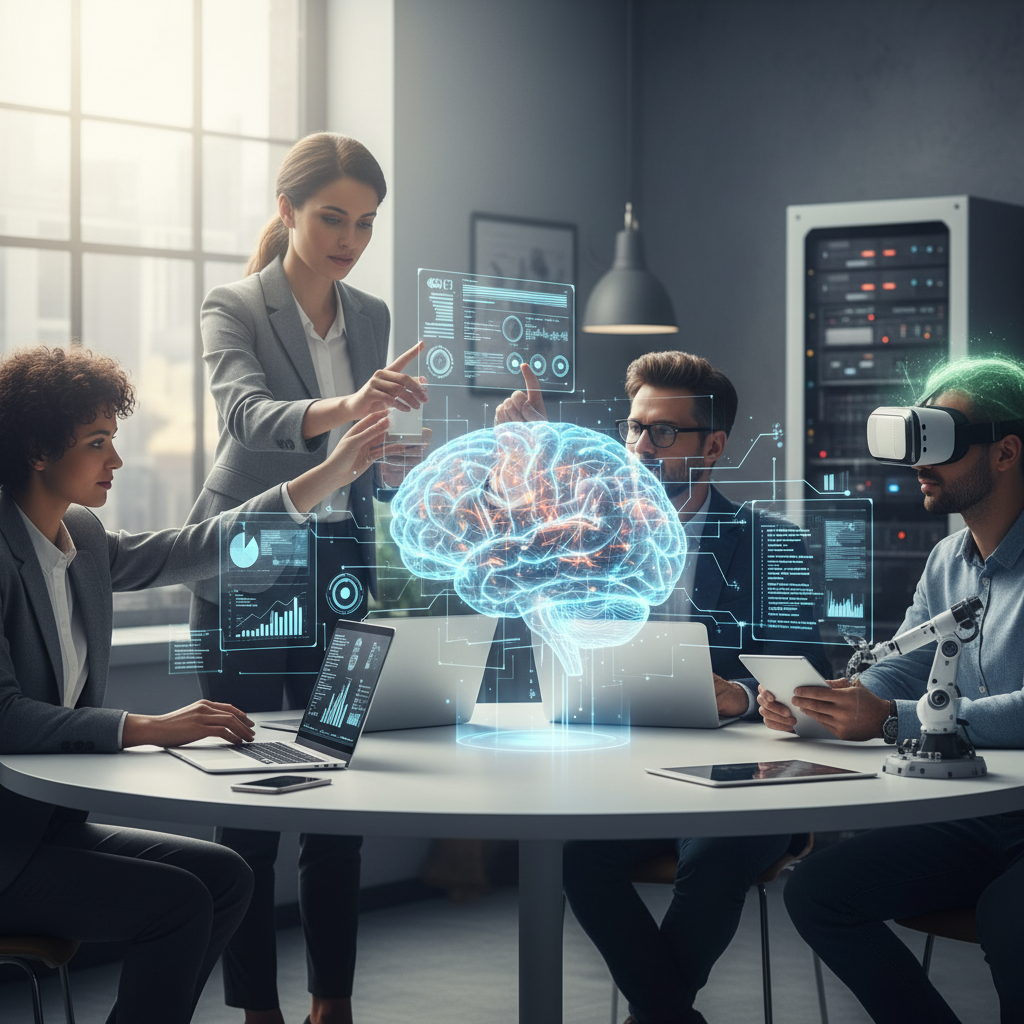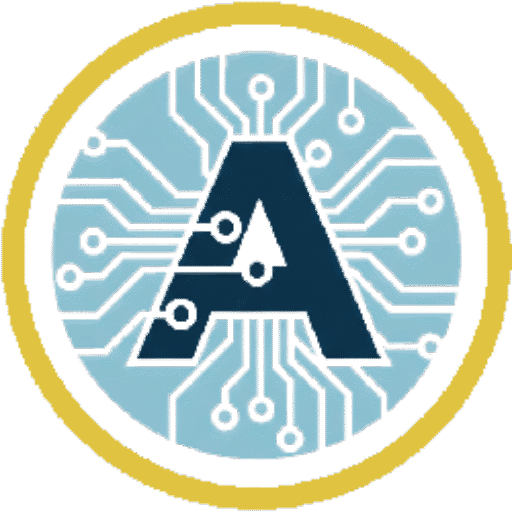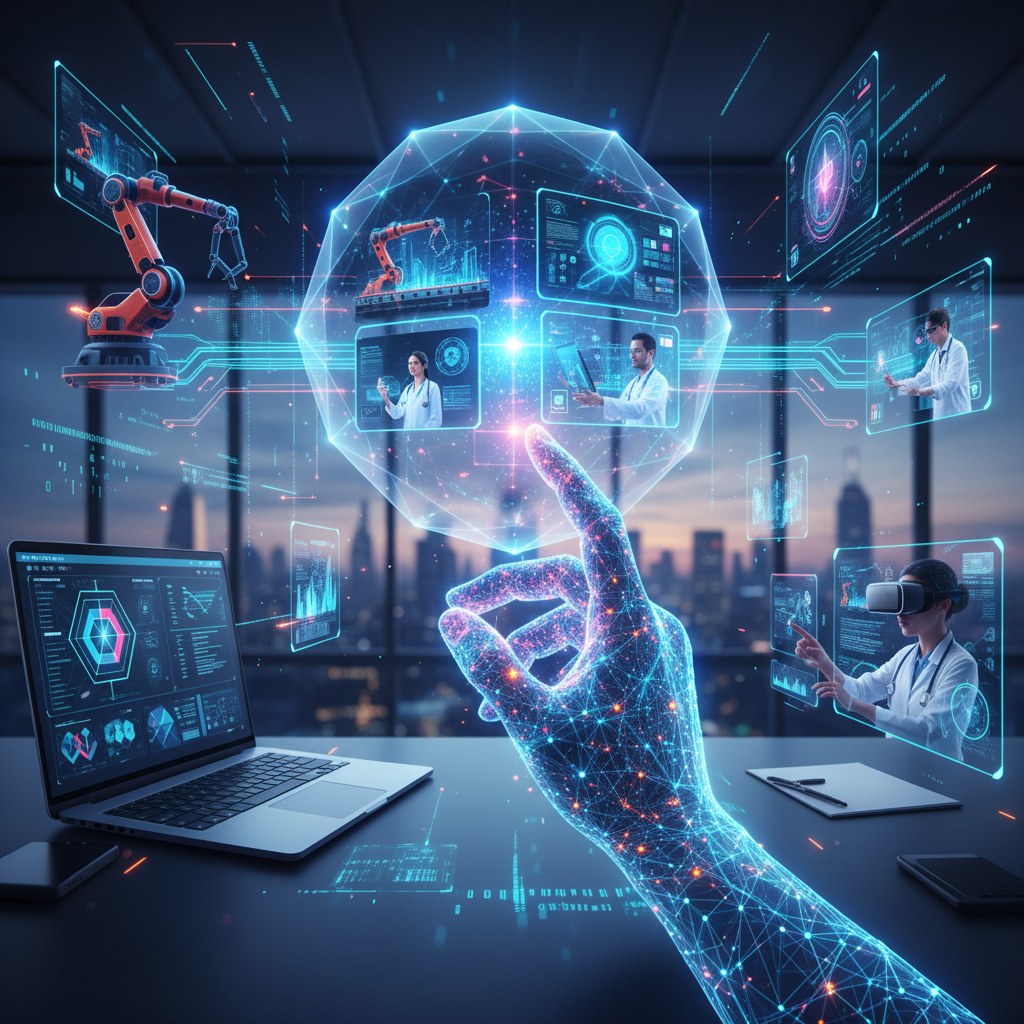The integration of artificial intelligence into the workplace is no longer a futuristic concept; it’s a present-day reality rapidly redefining how tasks are performed, decisions are made, and value is created. From automating mundane tasks to providing unprecedented analytical capabilities, AI for work is fundamentally altering job descriptions across every sector. This shift demands a deeper understanding of AI’s impact on employment, highlighting both the roles that are being reshaped and the exciting new opportunities emerging in its wake.
AI at Work: A Catalyst for Efficiency and Innovation
The primary driver behind the adoption of AI at work is its capacity to boost efficiency and foster innovation. AI systems excel at processing vast amounts of data, identifying patterns, and performing repetitive tasks with speed and accuracy far beyond human capabilities.
- Automation of Routine Tasks: AI-powered tools are taking over predictable, rule-based operations in areas like data entry, customer service (through chatbots), invoice processing, and scheduling. This frees human employees from tedious work, allowing them to dedicate more time to strategic thinking, problem-solving, and creative endeavors.
- Enhanced Decision-Making: AI provides sophisticated analytics, sifting through complex datasets to uncover insights that can inform better business decisions, from optimizing supply chains to personalizing customer experiences. This empowers workers with data-driven intelligence, transforming how strategies are formulated and executed.
- Augmenting Human Capabilities: Rather than replacing humans, AI often acts as a powerful co-pilot. For instance, in design and content creation, generative AI can produce countless variations or initial drafts, allowing human creators to refine, curate, and infuse their unique artistic vision. For a deeper dive into this partnership, you can explore insights on AI and Creativity: Augmentation, Limits, and the Future of Human Art.
AI and Work: Shifting Job Landscapes
The transformative power of AI and work naturally leads to shifts in the employment landscape. While some roles are evolving, others face significant disruption.

Industries and Jobs Undergoing Significant Change
AI is not uniformly affecting all jobs but rather specific tasks within them. Roles heavily reliant on repetitive, predictable, or data-processing functions are the most susceptible to automation.
- Manufacturing and Assembly: Robotics and AI-driven automation have long been a staple in factories, but now AI is enabling more flexible and intelligent automation, reducing the need for manual labor in assembly lines.
- Customer Service and Support: Basic customer inquiries and support tickets are increasingly handled by AI-powered chatbots and virtual assistants, which can resolve common issues quickly, reserving complex problems for human agents.
- Data Entry and Administrative Support: AI-driven Optical Character Recognition (OCR) and robotic process automation (RPA) can extract information from documents and manage administrative tasks with minimal human intervention.
- Transportation (in the future): As autonomous vehicle technology matures, jobs like long-haul truck driving, taxi services, and delivery driving could see significant changes, shifting human roles towards oversight and maintenance.
- Financial Analysis (certain aspects): While complex financial strategy remains human-led, AI can automate vast portions of data aggregation, trend analysis, and even basic report generation, requiring human analysts to focus on interpretation and client-specific advice rather than raw data crunching.
It’s crucial to understand that “phasing out” often means a redefinition of job responsibilities rather than outright elimination, requiring workers to adapt and acquire new skills.
Navigating the AI-Driven Workplace: Adapting to Change
For individuals and organizations alike, successfully navigating the era of AI for work hinges on adaptability, continuous learning, and strategic planning.
- Upskilling and Reskilling: Employees in vulnerable sectors must embrace lifelong learning to acquire skills that complement AI, such as critical thinking, problem-solving, emotional intelligence, and proficiency in AI tools. This ensures they can effectively leverage AI as an assistant rather than be replaced by it.
- Human-AI Collaboration: Fostering a culture where humans and AI work together, with clear roles and responsibilities, is essential. This involves training employees to effectively use AI tools, interpret their outputs, and provide necessary human oversight and ethical judgment.
- Ethical AI Deployment: Organizations must develop clear guidelines and ethical frameworks for how AI is implemented. This includes ensuring fairness, transparency, and accountability in AI systems to build trust among employees and customers.
Emerging Opportunities: New Jobs Created by AI
While AI transforms existing roles, it also acts as a powerful engine for job creation, giving rise to entirely new professions and expanding demand for specialized skills. These roles are critical for developing, deploying, managing, and optimizing the very AI systems that are reshaping our world.
Here is a list of jobs that are being created or will thrive significantly with the expansion of AI:
- AI Ethicist/Governance Specialist:
- Description: Focuses on developing ethical guidelines, policies, and regulatory frameworks for AI systems. They work to ensure AI is used responsibly, fairly, and transparently, mitigating biases and ensuring accountability.
- AI Integration Specialist:
- Description: Responsible for integrating AI solutions into existing business processes and IT infrastructures. They work with various departments to ensure seamless deployment and optimal performance of AI tools within an organization.
- Machine Learning Engineer:
- Description: Designs, builds, and maintains the actual machine learning models and algorithms that power AI applications. This includes data pipeline development, model training, and deployment.
- Data Scientist/Analyst:
- Description: While not entirely new, this role becomes even more critical in the AI era. They extract insights from vast datasets, often using AI tools, to inform business strategy, identify trends, and evaluate the performance of AI models.
- AI Product Manager:
- Description: Oversees the development and lifecycle of AI-powered products and features. They translate business needs into technical requirements for AI development teams and manage the strategic roadmap of AI solutions.
- Robotics Engineer/Technician:
- Description: Designs, builds, programs, and maintains robotic systems, which are often enhanced by AI for greater autonomy and adaptability in environments like manufacturing, logistics, and healthcare.
- AI UX/UI Designer:
- Description: Specializes in creating user-friendly interfaces and experiences for AI-powered applications, ensuring that complex AI functionalities are intuitive and accessible to human users.
The continuous evolution of AI for work promises a future where human ingenuity, augmented by artificial intelligence, can achieve unprecedented levels of productivity and innovation. The key to thriving in this new paradigm is a proactive approach to learning, adaptation, and collaboration with intelligent machines.

